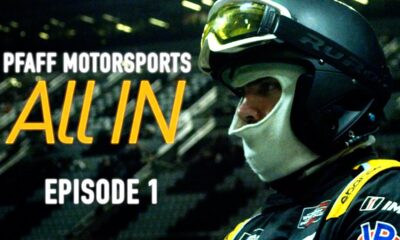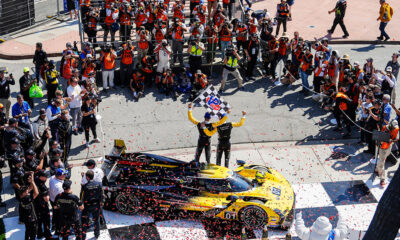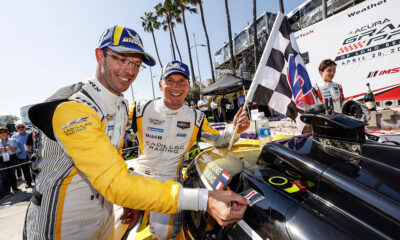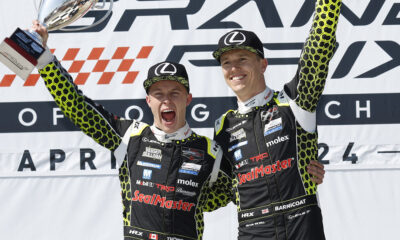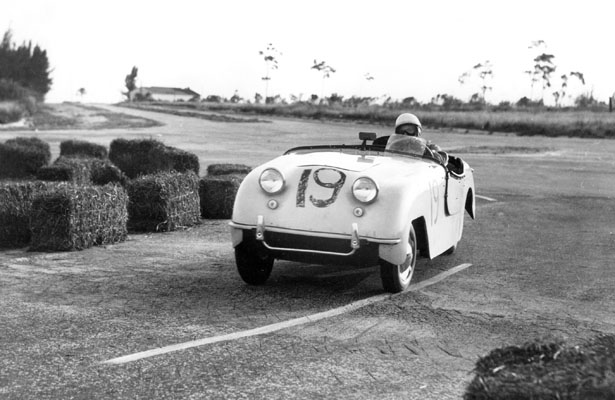
Photo: Sebring Archives
The Hendricks Field era was now over, and the Sebring Airport truly resembled a ghost town in the late 1940s after the military abandoned the air base.
The story of Sebring’s first sports car race turned out to be something even a Hollywood script writer would find a bit far fetched.
A total of 27 cars entered the Sam Collier Memorial Grand Prix of Endurance at Sebring, a six-hour event sanctioned by the Sports Car Club of America (SCCA).
All the entries were foreign cars, not a surprise at that time. Sports car racing was in its infancy in the U.S., and Allards, MGs, Ferraris, Aston Martins, Jaguars, etc. were among the more popular makes competing at that time.
Drivers entered in the first Sebring race included legendary pioneers of sports car racing such as Briggs Cunningham, John Fitch, Phil Walters, Luigi Chinetti, Alfredo Momo, Jim Kimberly and Bill Spear.
The race was to be run on a complicated formula that gave smaller displacement cars a chance to win. Rules would be patterned after the legendary 24-hour race in Le Mans. This was the first step I Ulmann’s desire to make Sebring “America’s Le Mans.”
One of the competitors was Tommy Cole, who was entered in an Allard. He requested some spare parts from a car dealer in Tampa. The dealer’s son volunteered to deliver them to Sebring, about a two-hour driver away. Vic Sharpe loaded his little Crosley Hot Shot and headed for Sebring.
When Sharpe arrived, Cole was fascinated by the little Crosley and asked him if he could barrow the car and take it for a ride around the circuit. Cole timed himself using his wristwatch and then did some calculations on a slide rule. He determined based on the Crosley’s tiny engine and its top speed that it could actually win the race with a little luck.
Cole convinced Sharpe to loan his Crosley out for the six-hour race (Sharpe didn’t mention it to anyone at the time, but the Crosley had been wrecked a few months earlier but seemed to be “properly repaired”).
Two drivers eagerly agreed to race the Crosley since Sharpe was not qualified to race it in the SCCA. Fritz Koster and Ralph “Bobby” Deshon driving the Crosley were the 28th entry and the only American car in the race.
The Crosley was built in Cincinnati, Ohio by the same company that made radios and refrigerators, thus the Crosley was somewhat of a joke in the paddock. It was clearly one of the slowest cars in the race.
The race utilized a Le Mans start, in which the drivers ran to their cars to start the race, probably the first time that had been done in the U.S. for a sports car endurance race, at least since the days of the Automobile Racing Club of America (ARCA) in the 1930s (not to be confused with the present day ARCA). The participants of the original ARCA eventually helped form the SCCA in 1944.
The circuit itself was a 3.5-mile layout (the famous 5.2-mile circuit would not be used until the first 12-hour in 1952). Men on horseback patrolled the Sebring circuit with rifles to prevent any wild animals from coming on the course.
Hay bales, orange crates and peach baskets marked the circuit. The pits were merely card tables set up at evenly spaced distances. The Governor of Florida was on hand as the honorary starter of the race, and then was taken on a few laps while the race was in progress!
As the race progressed, two Allards (with Cadillac engines) and Kimberly’s Ferrari 166 were clearly the fastest and were leading on distance, but that wasn’t how the winner was to be determined. On the handicap, the Crosley was battling for the lead with a Fiat 1100MM.
You can probably guess the outcome. The Crosley recorded incredibly consistent laps around the circuit at the hands of Deshon and Koster and won the handicap formula race.
The little car driven to the track by a spectator had made history. The following day some publicity photos were taken of the car at the track, and it was then driven by Sharpe back to Tampa, where it would drive around in anonymity for many years, changing owners and eventually disappearing (it has since been found and restored).
After the race, Deshon (now a Florida resident who still attends Sebring every year) wrote to Sharpe: “Just wanted to thank you for the wonderful afternoon at the expense of your Crosley. I can’t remember when I ever had a better time. Except for the laughing I did during the race, I can’t think of ever having a more relaxing ride. I hope the Crosley Hot Shot is none the worse for wear…”
The race was a major success, receiving extensive media coverage around the world.
For Ulmann, the next step was to make the race a 12-hour event. But politics and egos (imagine that, in sports car racing?) would make for yet another bizarre chapter in what would eventually become America’s great endurance classic.
Coming Next Week – Part Three



















